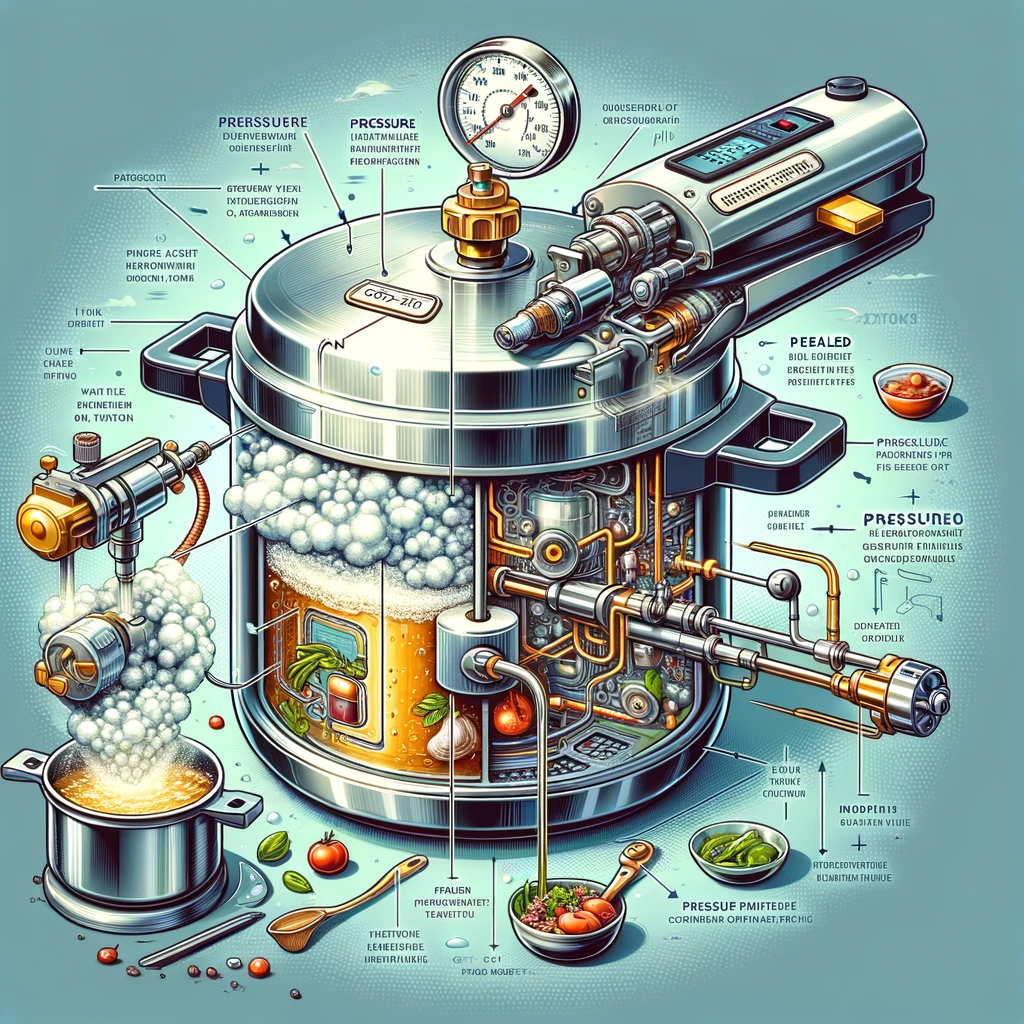
How Pressure Cookers Work: The Science Behind Quick and Efficient Cooking

How does a pressure cooker work?
A pressure cooker works on a simple principle: cooking food at high pressure to reduce cooking time significantly while preserving nutrients and flavors. Here’s a step-by-step explanation of how a pressure cooker works:
1. Sealing the Pot
When you place a pressure cooker on the heat, the air inside begins to warm up. As the temperature rises, the pressure cooker’s lid, which is sealed tightly with a gasket (or sealing ring), traps steam inside, preventing it from escaping.
2. Building Pressure
As the water or cooking liquid inside the pot heats up, it starts to boil, converting into steam. Since the steam cannot escape, it accumulates inside the cooker, increasing the pressure. The increase in pressure raises the boiling point of water from the standard 100°C (212°F) to as high as 121°C (250°F), depending on the pressure achieved.
3. Cooking at High Pressure
At the elevated boiling point, food cooks faster than it would at the normal boiling point of water. The high pressure forces moisture into the food, which helps tough cuts of meat become tender more quickly and allows flavors to develop more fully.
4. Regulating Pressure
Modern pressure cookers are equipped with a pressure regulator or vent that allows excess steam to escape to maintain a consistent pressure inside the cooker. This regulator is crucial for safety and ensures that the pressure does not exceed the design limit of the cooker.
5. Releasing Pressure
Once cooking is complete, the pressure inside the cooker needs to be released before opening the lid. This can be done naturally by removing the cooker from the heat and allowing it to cool down, which gradually lowers the pressure. Alternatively, the cooker may have a quick-release mechanism that allows steam to be vented quickly, reducing pressure rapidly. Some recipes may call for a combination of both methods.
Safety Features
Modern pressure cookers come with several safety features, such as locking lids that cannot be opened while there is still pressure inside, pressure release valves to prevent excess pressure build-up, and gaskets that release steam in case of valve blockage.
In summary, a pressure cooker’s efficiency and speed come from its ability to create a high-pressure environment that raises the boiling point of water, allowing food to cook at higher temperatures and thus more quickly, all while retaining nutrients and enhancing flavors.